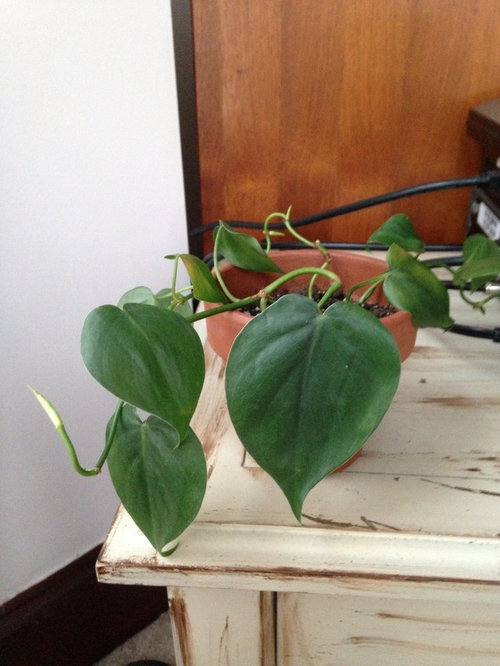Pothos or philodendron?
fandog
10 years ago
Related Stories

MOST POPULARThe Perfect Houseplant for People Who Kill Houseplants
If you can fill a jar with water, you can keep golden pothos vine happy — and it will pay you back with cleaner air and a greener home
Full Story
HOUSEPLANTS10 Top Plants to Grow Indoors
Brighten a room and clean the air with a houseplant that cascades artfully, stretches toward the ceiling or looks great on a wall
Full Story
CONTAINER GARDENSFreshen Up the Bath With Lush and Healthy Plants
Learn how to choose and care for plants that will do well in your space
Full Story
CONTAINER GARDENSHappy Houseplants, Happy People
Potted plants add life and beauty to a room. Learn easy ways to keep them healthy
Full Story

HOUSEPLANTS8 Essentials for Healthy Indoor Plants
Houseplants add so much to our homes — and can thrive when grown in the right conditions. Keep these tips in mind
Full Story








asleep_in_the_garden
dellis326 (Danny)
Related Professionals
Quincy Landscape Architects & Landscape Designers · San Juan Landscape Architects & Landscape Designers · Forest City Landscape Architects & Landscape Designers · Washington Landscape Architects & Landscape Designers · Surprise Landscape Contractors · Cockeysville Landscape Contractors · Fort Mill Landscape Contractors · Fridley Landscape Contractors · Madera Landscape Contractors · Mission Landscape Contractors · Newberg Landscape Contractors · Paramount Landscape Contractors · Pueblo West Landscape Contractors · Snoqualmie Landscape Contractors · Wheat Ridge Landscape Contractorsbirdsnblooms
asleep_in_the_garden
birdsnblooms
dellis326 (Danny)
tropicbreezent
asleep_in_the_garden
Tiffany, purpleinopp Z8b Opp, AL
birdsnblooms
fandogOriginal Author
asleep_in_the_garden
stewartsjon
stewartsjon
dellis326 (Danny)
Tiffany, purpleinopp Z8b Opp, AL
Tiffany, purpleinopp Z8b Opp, AL
tropicbreezent
stewartsjon
dellis326 (Danny)
birdsnblooms